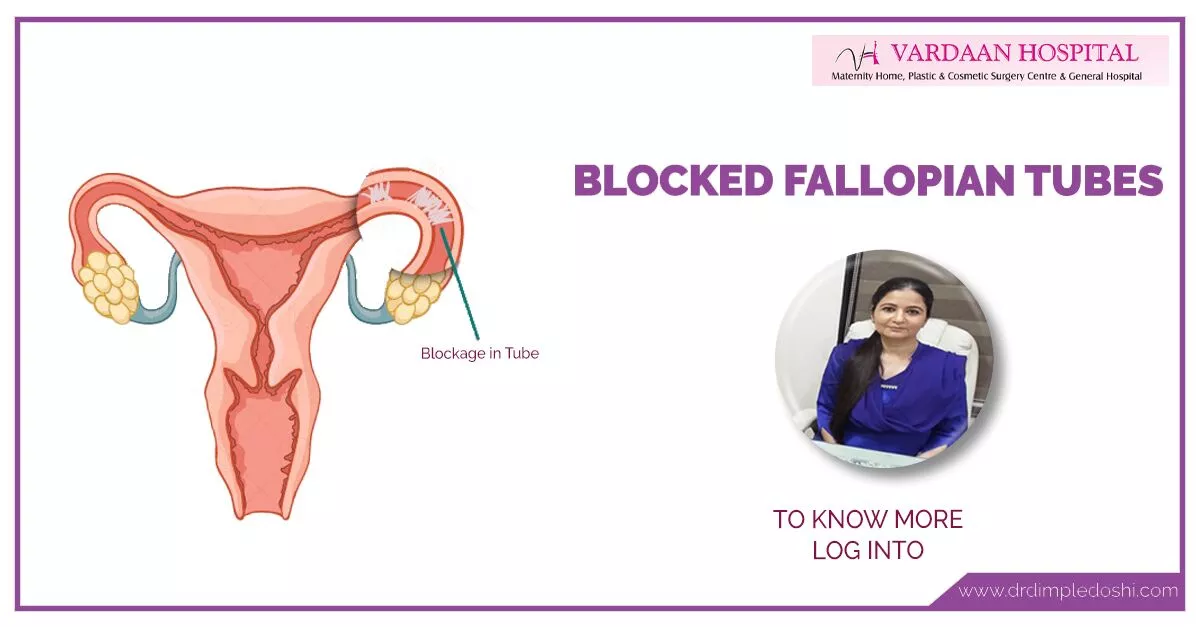The most common complication of locked fallopian tubes is infertility
Second is ectopic pregnancy if the fallopian tubes are partially blocked.
Blocked Fallopian Tube are the connecting tubes between the ovaries and uterus. Every month the ovary releases the egg. This egg gets fertilized inside the fallopian tube which then transfers to the uterus for implantation. If a Fallopian Tube is blocked; the passage for the sperm to get to the egg and also the path of the fertilized egg back to the uterus gets obstructed or blocked. And this can lead to infertility.
Treatment may involve diagnostic and surgical procedures:

Dr. Dimple Doshi at Vardaan Hospital; believes prevention is better than cure, and thus apart from the precise treatment guidelines; preventive measures are an essential part of our consultations with the patients who have either had it or want to know more about it.
Blocked fallopian tubes are one of the commonest causes of infertility; as due to the blockage transfer of the fertilized egg back to the uterus fails.
If both the fallopian tubes are blocked; pregnancy without treatment is impossible.
If both the fallopian tubes are partially blocked; you can get pregnant but the chances of ectopic pregnancy are high.
If one of the fallopian tubes is blocked; it would likely not cause infertility as the fertilised egg can still travel through the normal fallopian tube. And your gynaecologist will also prescribe the medicines to increase your chance of ovulation on the open side.
Blocked fallopian tubes usually results from infections, scar tissues inside the tubes or adhesions.
And the causes are:
If the block of the fallopian tubes is due to infections like tuberculosis or sexually transmitted diseases; medicines to control the infections can help in opening the block if done in initial stages when no scarring has happened.
It is possible to get pregnant after blocked fallopian tubes treatment.
Success depends upon the treatment method ; site of the block and the severity of the block.
Successful pregnancy is likely if the block of the fallopian tube is near the uterus.
Success rates are lower if the block is at the end of the fallopian tube or somewhere in its middle portion.
Success rates following the repair of surgically operated tubes for sterilisation are highly dependent upon the length of the tubes after recanalization.
Success rates following the infection are not so good.
The most common complication of locked fallopian tubes is infertility
Second is ectopic pregnancy if the fallopian tubes are partially blocked.
Blocked fallopian tubes can cause infertility but still it is possible to have a child. In many cases hysteroscopy and laparoscopic surgery can remove the blockage and improve fertility chances. If surgery is not possible or if the outlook does not improve ; IVF can help you conceive if you are otherwise healthy.
Most of the times the blockage of the fallopian tubes happens due to infections and mainly STDs or sexually transmitted infections.
Prevention of sexually transmitted diseases will also reduce your chances of blocked fallopian tubes.